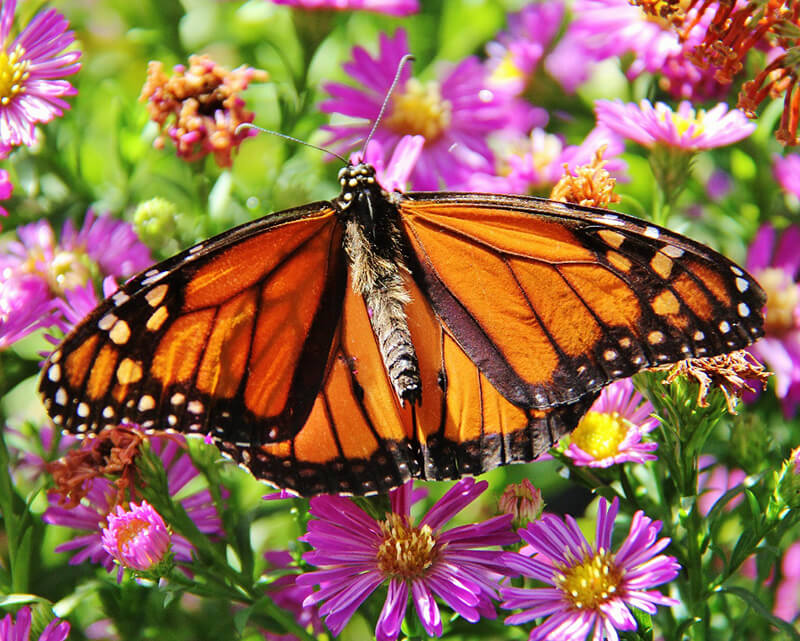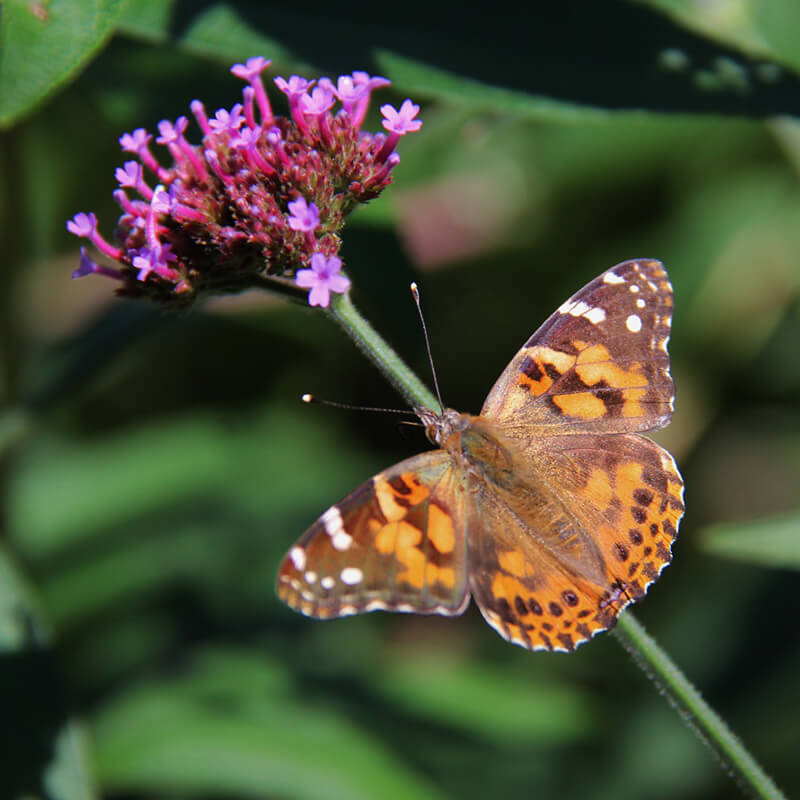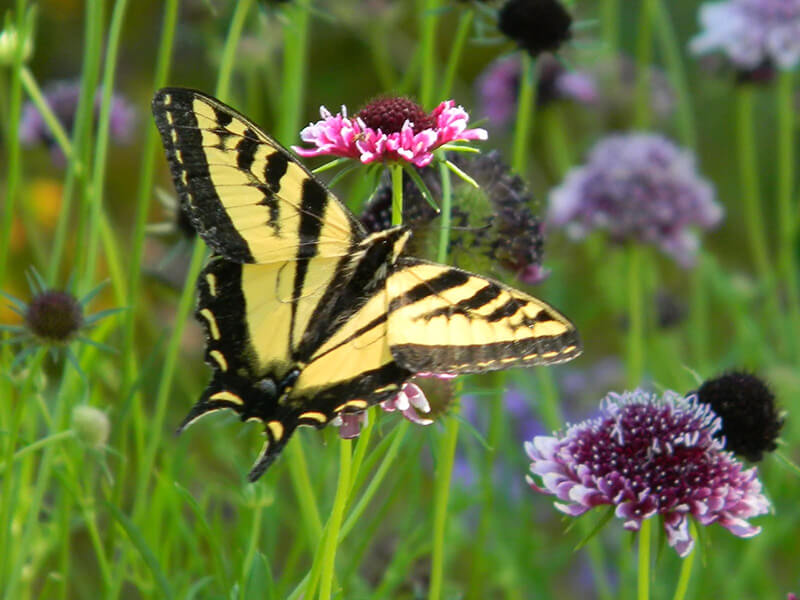What do Monarchs eat?
Monarch caterpillars always eat milkweed. As an adult butterfly, they get their nutrients from the nectar of flowers like Buddleia, Shasta daisy, and Verbena. When Monarchs are ready to lay their eggs, the female makes her way to a milkweed plant. This way, when the caterpillars hatch from the egg, they’re already on their food source.
Where can I find a Monarch?
The Monarch butterfly is widely scattered among open habitats from Central America up towards Canada. When the winter hits, the Monarchs that are located in western North America migrate to the southern coast of California. Those who are on the east side of the Rocky Mountains migrate to the Sierra Madre Mountains of central Mexico.
Are there any threats toward the Monarch?
Milkweed used to grow rapidly throughout the United States, but with the expansion of industrialized farming and increased use of powerful herbicides, there has been a vast decline in this particular plant. Without milkweed, the Monarch has nowhere to lay its eggs and nothing for a caterpillar to eat. If the loss of milkweed continues, the number of Monarch butterflies will continue to drop as well.
What does a Painted Lady eat?
As a Painted Lady grows from a caterpillar no bigger than an eyelash, all the way to a large, 2-inch munch machine, it chooses to eat mostly Thistle, Hollyhock, Cheese Weed, and Tree Mallow. When it becomes an adult butterfly, the Painted Lady then decides to sip the nectar of common flowers including Goldenrod, Aster, Joe Pye Weed, Iron Weed, and Red Clover.
Where can I find a Painted Lady?
Painted Lady butterflies live just about everywhere, especially in meadows, parks, and gardens. Every spring, Painted Lady butterflies migrate south to lay their eggs on host plants like Thistle, Mallow, Hollyhock, Black Cherry, and Daisies. No one knows if the Painted Lady returns to their first home; their migration patterns turn into a mystery.
Are there any threats toward a Painted Lady?
The Painted Lady butterflies’ host plant is not threatened, but because the Painted Lady is so small, it is vulnerable to predators such as birds, dragonflies, mantis, and other insect eaters.
What do Western Tiger Swallowtails eat?
As larva, the Western Tiger Swallowtail tends to eat more Cottonwood, Ash, Willow, Alder, and Aspen than anything else. The adult butterfly sips nectar from common plants such as Buddleia, Lavender, Coneflower, and Verbena.
Where can I find a Western Tiger Swallowtail?
Serving as the Oregon state butterfly, the Western Tiger Swallowtail continues to be one of the most recognizable butterflies on the west coast. These particular butterflies can be seen along stream sides, in urban gardens, and among mountain woodlands. When mid-summer hits, Western Tiger Swallowtails can be spotted in most areas, but mostly along the Pacific coast. While we don’t raise Swallowtails in our flight room (because the caterpillar’s host plants are too big!) we do see many of them in our outdoor gardens.
Are there any threats toward a Western Tiger Swallowtail?
As a caterpillar, a Western Tiger Swallowtail has wasps, birds, and spiders to look out for as major predators. When they’re an adult butterfly, their large size makes them less vulnerable and the only major predator is a wasp.




